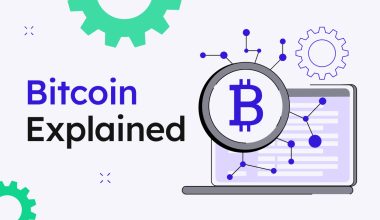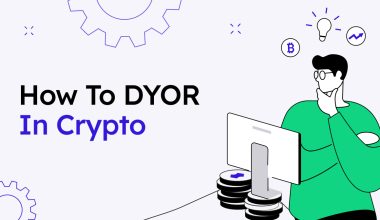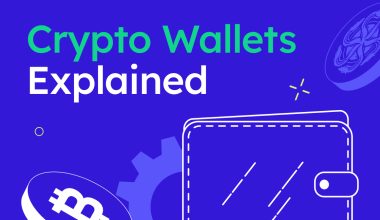Ready to buy your first crypto? Maybe you want to try your hand at trading? Before any of that, you want to be familiar with the different types of orders in crypto trading so that you can use them effectively.
In this article, we will provide an overview of the most common types of orders and explain how they work.
What are orders in trading
An order in trading refers to an instruction given by a trader to a broker or an exchange to execute a trade in the cryptocurrency markets.
Orders are used to buy at a specified price or under certain conditions. They can be executed immediately at the prevailing market price, or they can be placed at a specific price level. Thsi level may be higher or lower than the current market price.
There are different types of orders used in trading, including market orders, limit orders, stop-loss orders, take-profit orders, and trailing stop orders. Each has its own characteristics and purposes.
Let’s explore them.
Market Order
A market order is the most basic type of order in cryptocurrency trading. It’s basically an instruction to buy or sell a crypto asset at the best available price.
Market orders are used when a trader wants to execute a trade quickly and is willing to accept the prevailing price. They are good for traders who value speed and convenience over price precision. They are also particularly useful in markets with high liquidity, where the bid-ask spread is narrow and the price slippage is minimal.
How to use a market order: For example, suppose you want to buy Bitcoin using a market order. You would place a buy order with the amount of Bitcoin you want to purchase. The exchange will then execute the trade at the current market price immediately. Your Bitcoin enter your account, and that’s where the order ends.
Limit Order
A limit order is used when a trader wants to buy or sell a cryptocurrency at a specific price, rather than at the prevailing market price. This tells the exchange or broker to wait for that price to be available and execute the order then, rather than execute it immediately at the current price.
To use a limit order, a trader would specify the direction of the trade (buy or sell), the quantity they want to trade, and the price at which they want to buy or sell the asset.
If the market price reaches the specified price level, the limit order is executed, and the trader buys or sells the asset at the specified price. If the market price does not reach the specified price level, the limit order remains in the order book until it is cancelled or expires.
There are four types of limit orders that are commonly used in trading
- Buy limit order: A buy limit order is an order to buy an asset at or below a specified price. It is used when a trader believes that the price of the asset will decline before rising again.
- Sell limit order: A sell limit order is an order to sell an asset at or above a specified price. It is used when a trader believes that the price of the asset will rise before declining again.
- Buy stop limit order: A buy stop limit order is an order to buy an asset at a specified price or higher, after a certain price level is reached. It is used when a trader believes that the price of the asset will continue to rise after breaking through a certain resistance level.
- Sell stop limit order: A sell stop limit order is an order to sell an asset at a specified price or lower, after a certain price level is reached. It is used when a trader believes that the price of the asset will continue to decline after breaking through a certain support level.
Limit orders are especially useful in markets with high volatility, where the market price can fluctuate rapidly, and traders want to avoid paying too much for buying or selling an asset.
How to use a limit order: For example, suppose you want to buy Bitcoin at a specific price of $50,000. You would place a buy limit order with the amount of Bitcoin you want to purchase and the price you are willing to pay. If the market price reaches or falls below your specified price, the order will be executed automatically.
Stop-Loss Order
A stop-loss order is an instruction to sell a cryptocurrency at a specific price or worse. It is used to limit losses if the market moves against the trader’s position.
Stop-loss orders are useful for traders who want to limit their potential loss on a trade and to protect their trading capital. Stop-loss orders are particularly useful in markets with high volatility, where the market price can fluctuate rapidly, and traders want to avoid large losses.
How to use a stop-loss order: Suppose again you buy Bitcoin at $50,000 and want to limit your potential losses if the price drops. You would place a stop-loss order at a specific price below the market price. If the market price falls to the specified price, the stop-loss order will be executed automatically, limiting your losses.
Read more: How to stay safe in crypto.
Take-Profit Order
A take-profit order is used to lock in profits if the market moves in favor of the trader’s position.
Take-profit orders are useful for traders who want to lock in their profits and to manage risk. Take-profit orders are particularly useful in markets with high volatility, where the market price can fluctuate rapidly, and traders want to avoid losing their profits.
How to use a take-profit order: For example, suppose you buy Bitcoin at $45,000 and want to take your profits if the price rises to a specific level, say $50,000. You would place a take-profit order at that specific price. If the market price reaches or exceeds the specified price, the take-profit order will be executed automatically, locking in your profits.
Trailing Stop Order
A trailing stop order is an instruction to sell a cryptocurrency at a specific percentage or dollar amount below the market price. It is used to protect profits if the market moves against the trader’s position.
How to use a trailing stop order: For example, you just bought Bitcoin at $50,000 and want to protect your profits if the price falls. You would place a trailing stop order at a specific percentage or dollar amount below the market price. If the market price falls by the specified percentage or dollar amount, the trailing stop order will be executed automatically, protecting your profits.
Conclusion
Knowing the differences between the types of orders is key for a successful trading journey. Orders are an extremely potent and useful instrument which can increase profits, decrease losses, and save you a lot of time. By using them effectively and knowledgeably, you increase your chances of successful trading.
Keep reading, keep learning – explore more of our resources below.






